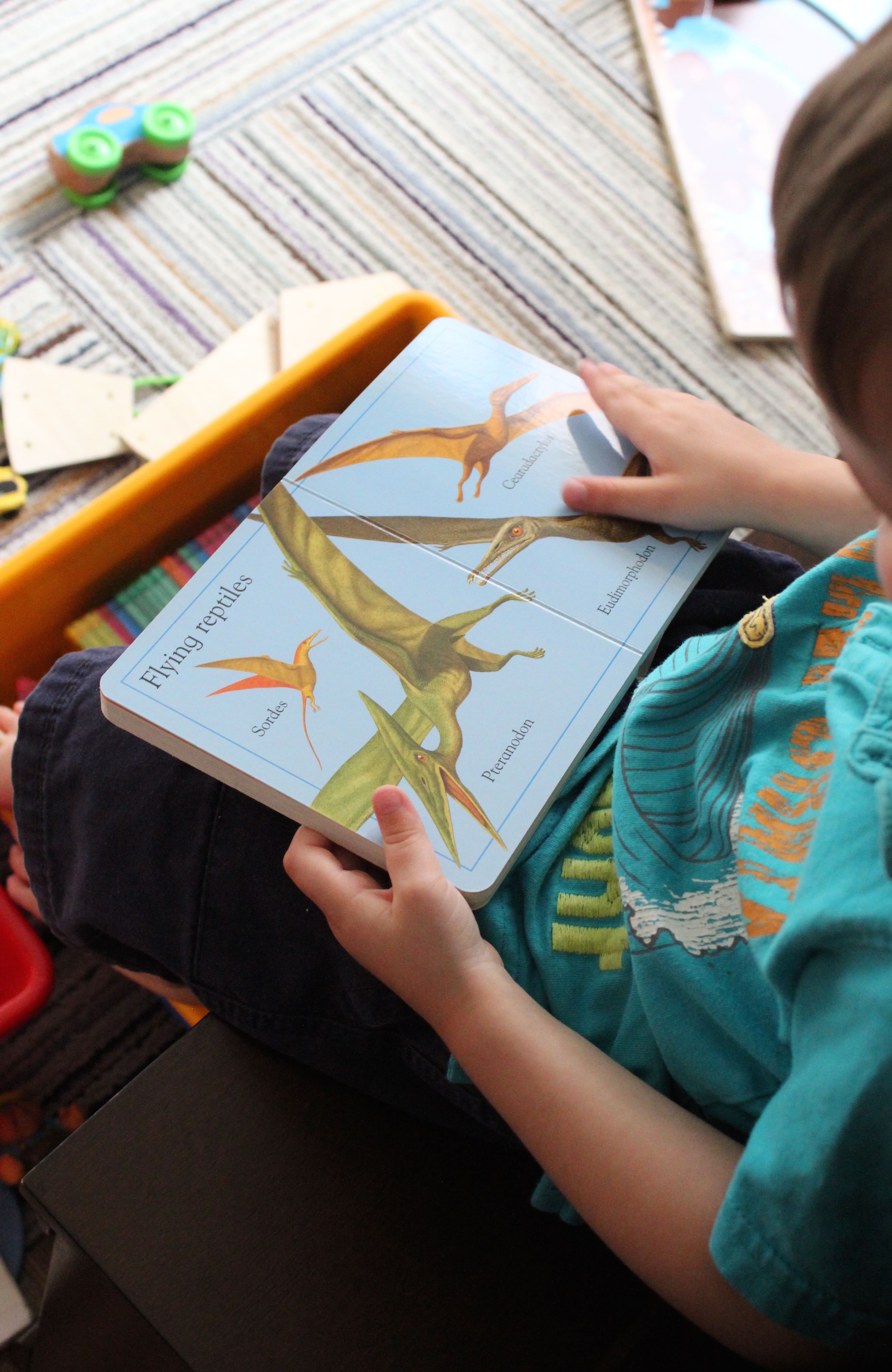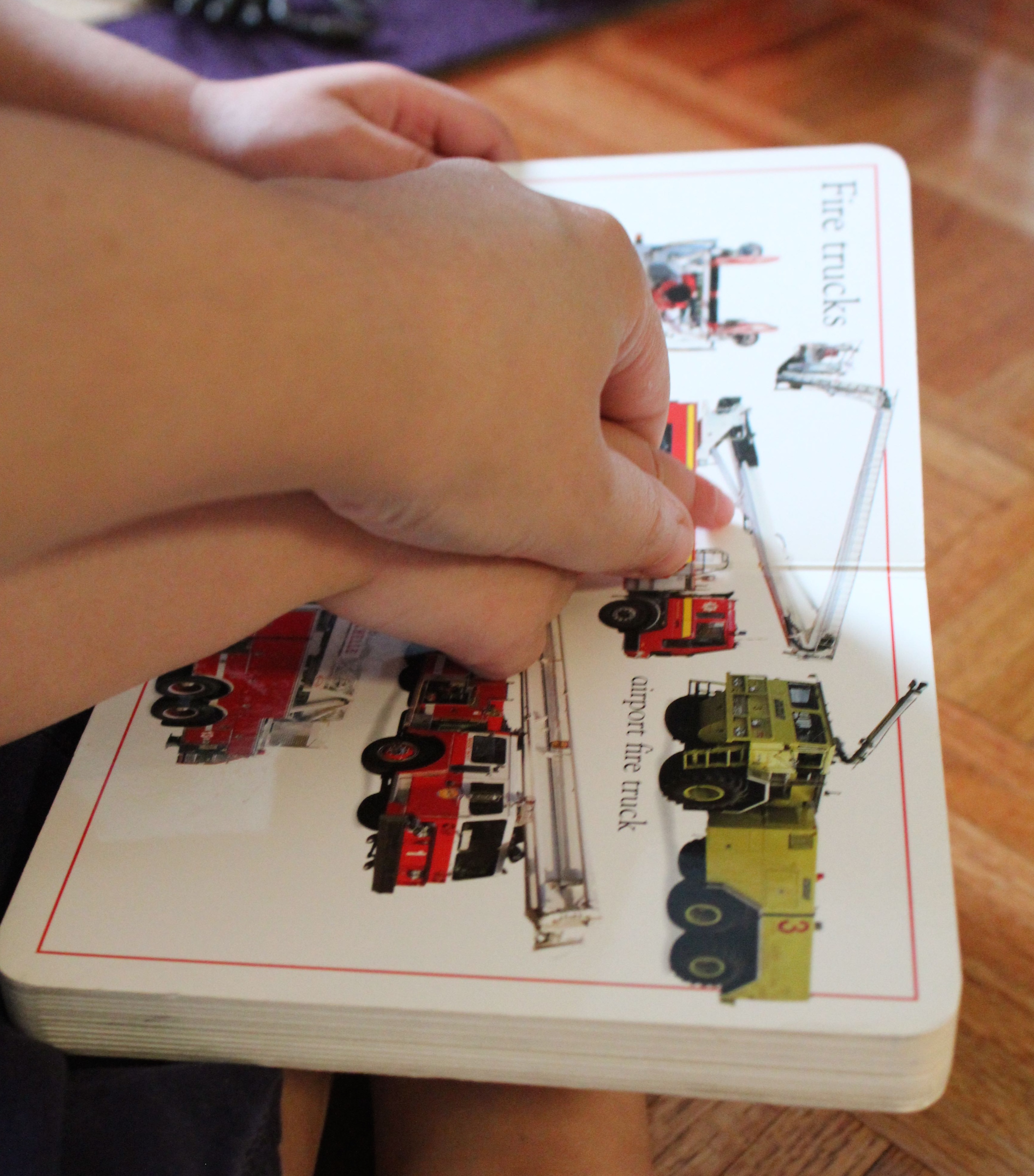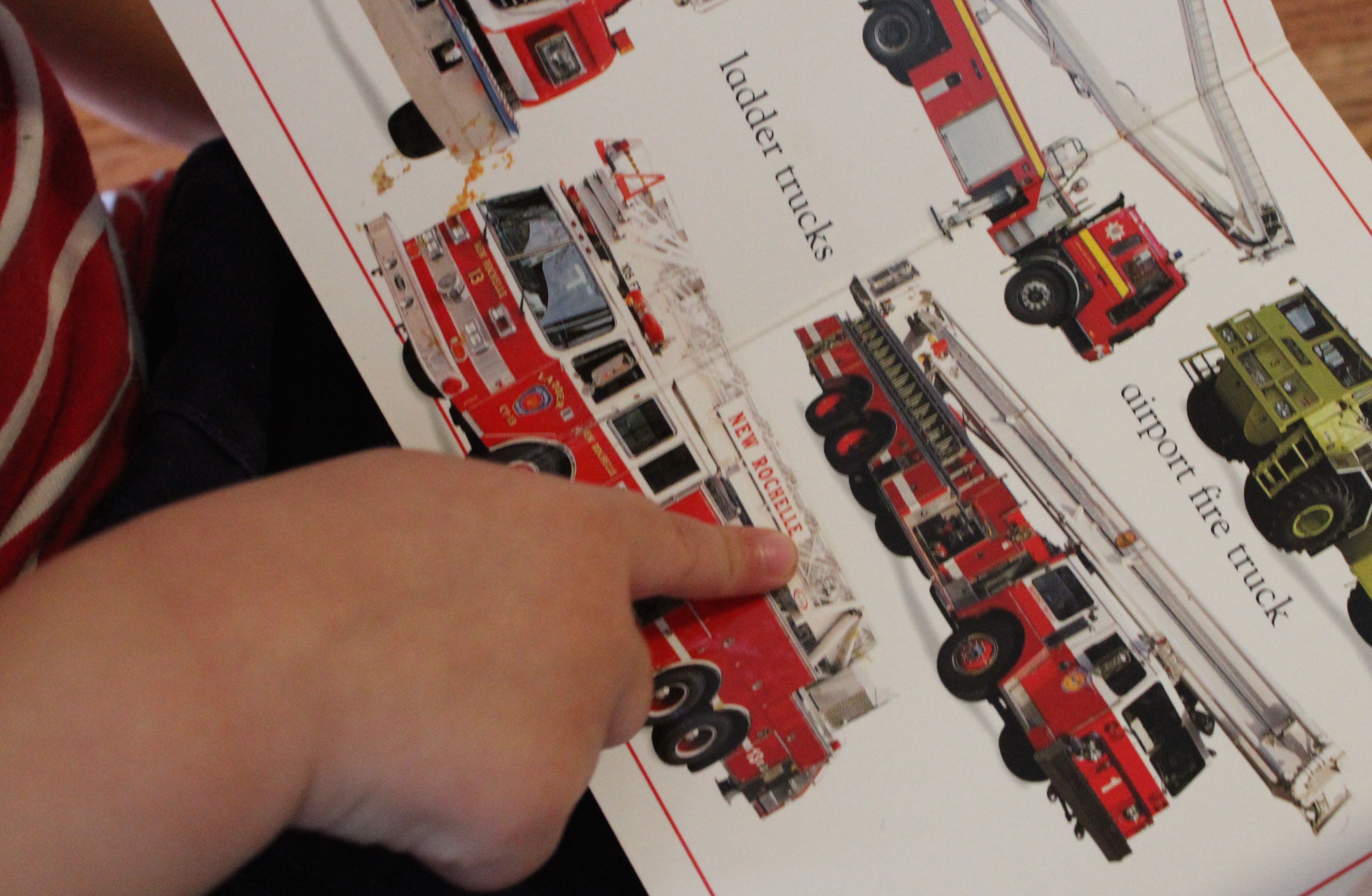Fairy Tales & Fables Part 1: Little Red Riding Hood, The Three Billy Goats Gruff, & The Three Little Pigs
There are so many reasons for parents to read fairy tales and fables to young

A few weeks ago, while Luke and Harry were in speech and OT sessions, I sat in the waiting room watching a 4-year-old boy with ASD flip through a copy of "My First Dinosaur Board Book." He sat on his nanny's lap, pointing and showing her all the creatures, and I was astonished as he labeled them, carefully enunciating all the multi-syllabic genus or species names: diplodocus; iguanodon; velociraptor; heterodontosaurus; parasaurolophus.
We own that book too; it's one of three books we own in DK Publishing's My First Board Books series. Harry flips through it every once in awhile. He likes the spreads of flying reptiles ("Dino-sore-eeyore... Bird!) and the spreads of swimming reptiles ("Dino-sore-eeyore... Fishy!) best. It's clear based on his affinity for this book, the "That's Not My Dinosaur..." Usborne Touchy-Feely book I mentioned in my last blog post, and how much he plays with the dino figurines in our living room, that dinosaurs are fast becoming one of his things.
In the past few months, I've become mildly aware that there is something of a schism among parents on the topic of how to engage with what are sometimes called, restricted interests in children with ASD. So far I err on the side of respecting that my kids are going to have some very focused, idiosyncratic interests--and that is just who they are. I think that knowing lots about a topic is great, and I think part of the reason I have this perspective is that I've known adults with ASD who have segued their focused interests into successful careers, useful skills, or well-developed and fulfilling hobbies.
Also, a strongly preferred interest is an opportunity to motivate learning. This is certainly true for Luke.
"My First Truck Board Book," easily holds the title of Luke’s Favorite Book right now. And while Luke likes all vehicles, the fire truck is king, and this beloved, much duct-taped tome has a two-page spread of fire trucks and another two-page spread of 'firefighting vehicles," making it the best. thing. ever.
Luke has some joint attention skills, so every time he encounters a fire truck, he looks at me and exclaims, “Fie-ya Twa!” So whenever I can, I leverage these moments, get down to his level and say, “Yes, Luke! A fire truck!” Over the last four weeks, I've sometimes had success asking him if he can point to all the fire trucks or even to count them; pointing to request is an emerging skill that ABA has been working on with him. But this is a bit different. Pointing to show is a distinct component of joint attention1. So I 'modeled' it at first, demonstrating by example. Eventually, I sat him on my lap and put my hand over his. Then, I molded his hand so his index finger was extended and pressed it against each fire truck. Because Luke loves fire trucks, he didn't fuss.

The notion of 'hand-over-hand' prompting2 never occurred to me until I was shown how to do it by Luke's main ABA therapist, Amber. What makes it such a good idea is that it ensures a successful outcome, and it's that initial success (and the praise/reinforcement he gets) that motivates future spontaneous attempts.

Both Luke and Harry are beginning tacting3 programs targeted at parts of the body, so I'm hoping that a third book in this series that we own, "My First Body Board Book," will be a useful tool for me to reinforce what they're learning on my own time with them.
These books don't tell a story; instead, they are taxonomic, something I am guessing appeals to kids with autism since they prefer order and organization. The trucks in "My First Truck Board Book" are divided into categories based on how they are used ('Carriers,' 'Diggers,' 'Farm Machines,' etc.); the dinosaurs and reptiles in "My First Dinosaur Board Book" are divided by major common traits ('Speedy runners,' 'Frills and horns,' Leaf-eaters,' etc.); and the body parts in "My First Body Board Book" are presented in macro view (eg. 'face') and then in micro view, sectioning off the body more specifically (so a page titled 'Face' includes 'head,' 'eyebrow,' 'eye,' 'ear, 'tongue,' etc.). It also covers the senses, faces expressing different emotions, ways the body can move, and clothing.
My First Truck Board Book by Constance Robinson
My First Dinosaur Board Book by Beth Landis
My First Body Board Book by Iris Rosoff
DK Publishing
List price: $5.99 (USD)

1. Autism Gateway has reprinted information from the American Academy of Pediatrics, defining "joint attention," and describing its typical milestones: http://www.autismgateway.com/cme_13.html↩
2. This website by an ABA therapist has a helpful description of the different ways to prompt a child, including the Hand-Over-Had (HOH) method: http://abatherapists.com/how-to-prompt-a-child-with-autism/↩
3.From the very useful blog I Love ABA!, which has a glossary page for ABA terms: "Tact- This is a Verbal Behavior term. A tact is being able to label or describe an item with stimuli being present. For example, a learner can tact if they can label the color of a ball if the ball is present." (retrieved 7/31/15) ↩